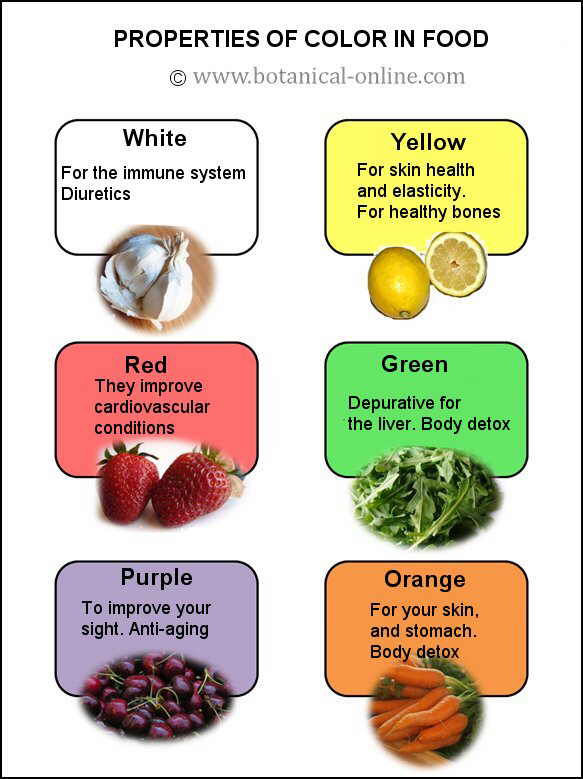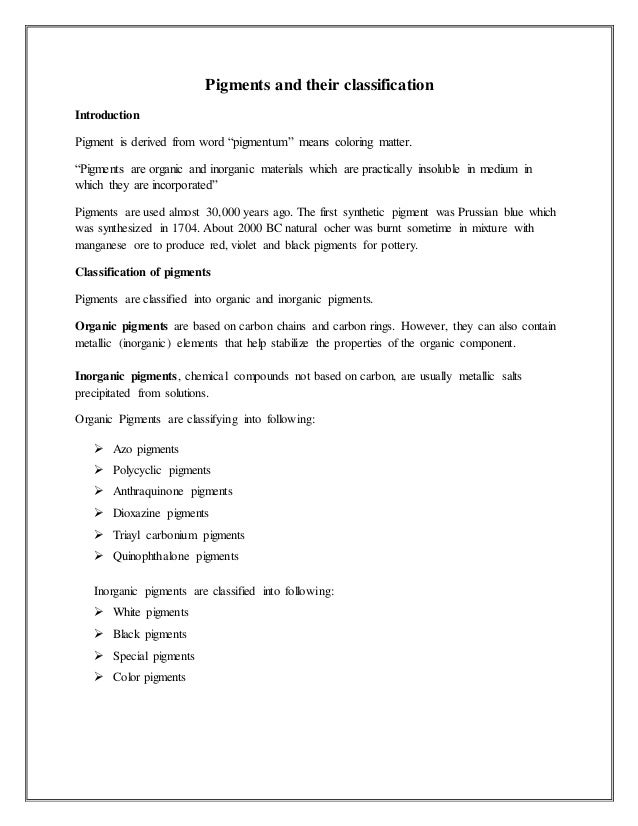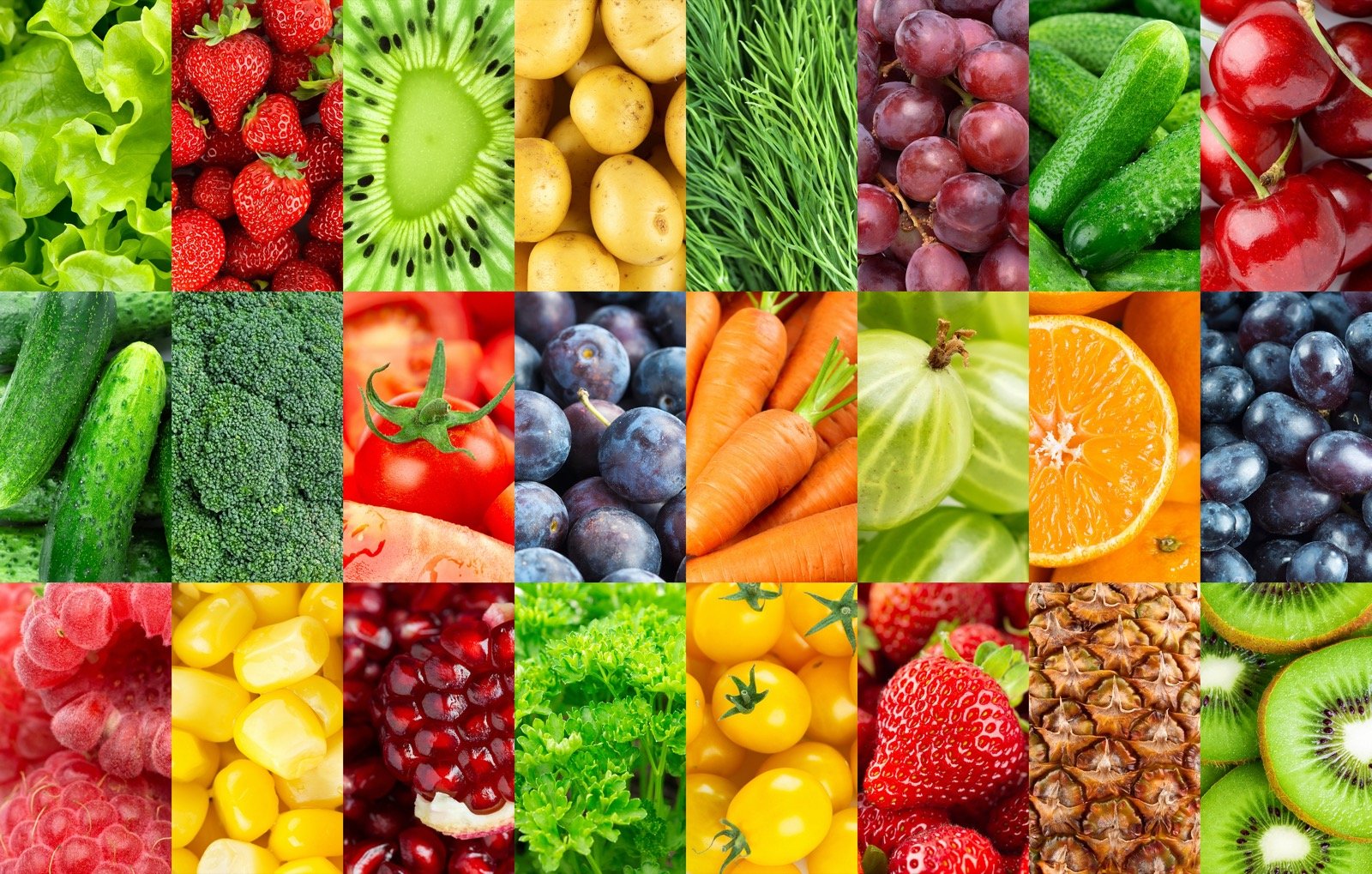Esquivel in Handbook on Natural Pigments in Food and Beverages 2016 5 Effect of Storage Conditions on Betalain Stability. The meaning of concoct is to prepare by combining raw materials.
Food Colorants Analysis In Foods Encyclopedia

Anthocyanins Definition Benefits Sources

Food Color And Coloring Food Quality Differentiation And Regulatory Requirements In The European Union And The United States Sciencedirect
Colors that are exempt from certification include pigments derived from natural sources such as vegetables minerals or.

Food pigments definition. Chlorophyll is the name given to a group of green pigment molecules found in plants algae and cyanobacteria. Their photosynthetic pigments are more varied than those of plants and their cells have features not found among plants and animals. Colourants can be used for many purposes including printing painting and for colouring many types of materials such as foods and plasticsColourants work by absorbing varying amounts of light at different.
Certified food colors generally do not add undesirable flavors to foods. These organisms can be free-living or can be found in the gut of animals. Producing body heat by the accumulation of brown-fat.
Generally dyes are often organic compounds whereas pigments are often inorganic compoundsPigments of prehistoric and historic value include ochre charcoal and lapis lazuli. Types of Chromatography. Organisms with prokaryotic cells are called prokaryotes and they are generally single-celled microorganisms.
In eukaryotes ie cells having a nucleus the cytoplasm contains all of the organelles. These pigments are usually located in a scaffold of membrane-bound proteins called light-harvesting complexes. Photosynthesis definition states that the process exclusively takes place in the chloroplasts through photosynthetic pigments such as chlorophyll a chlorophyll b carotene and xanthophyll.
Both betacyanins and betaxanthins are prone to degradation in the presence of oxygen and light acts in a synergistic way Manchali et al 2012. Substances can be separated on the basis of a variety of methods and the presence of characteristics such as size and shape total charge hydrophobic groups present on the surface and binding capacity with the stationary phase. Controlling various cellular activities such as cell differentiation cell signaling cell.
To improve betalain retention during storage light conditions and oxygen exposure should be considered. Some bacteria and archaea can utilize energy obtained from an oxidative chemical reaction chemosynthesis. How to use concoct in a sentence.
They trick humans for food shelter. The chlorophyll pigment gives plants their green color. Algae are usually green but they can be found in a variety of different colours.
Cytoplasm the semifluid substance of a cell that is external to the nuclear membrane and internal to the cellular membrane sometimes described as the nonnuclear content of protoplasm. Read on to explore more about the types and characteristics of algae in the algae notes provided below. The type of cells which do not have a well-defined nucleus and no membrane-bound organelles are known as prokaryotic cells.
These chemoautotrophs differ from photoautotrophs in that they do not depend on sunlight for energy. All green plants and a few other autotrophic organisms utilize photosynthesis to synthesize nutrients by using carbon dioxide water and sunlight. Read more about Chloroplast.
But in the 1980s the Japanese government created a class of functional foods that included additional health benefits beyond those covered by basic nutrition. Pigments produce a variety of colors in the plant and animal world. Dwyer in Encyclopedia of Food Sciences and Nutrition Second Edition 2003 Recommended Dietary Allowances.
Chromoplasts define all the plant pigments stored and synthesized in plants. A colourantcolour additive British spelling or colorantcolor additive American spelling is a substance that is added or applied in order to change the colour of a material or surface. Euglena is a motile single-celled unicellular organism that is commonly found in aquatic habitats.
Are consumed by microscopic herbivorous animals called zooplankton which are then eaten by organisms higher up in the food pyramid. The recommended dietary allowance RDA is the average daily dietary intake level that suffices to meet the nutrient requirements of nearly all 9798 healthy persons of a specific sex age life stage or physiological condition such as pregnancy or lactation. Food may provide protein for muscle repair carbohydrates for energy or vitamins and minerals for cell function.
Chlorophyll is known as a pigment or molecule that reflects some wavelengths of light while absorbing others. Photosynthesis definition the complex process by which carbon dioxide water and certain inorganic salts are converted into carbohydrates by green plants algae and certain bacteria using energy from the sun and chlorophyll. The two most common types of chlorophyll are chlorophyll a which is a blue-black ester with the chemical formula C 55 H 72 MgN 4 O 5 and chlorophyll b which is a dark green ester with the formula C 55 H 70 MgN 4 O 6Other forms of chlorophyll include chlorophyll c1 c2 d and f.
Chlorophyll definition the green coloring matter of leaves and plants essential to the production of carbohydrates by photosynthesis and occurring in a bluish-black form C55H72MgN4O5chlorophyll a and a dark-green form C55H70MgN4O6chlorophyll b. In addition to their ecological roles as oxygen producers and as the food base for almost all aquatic life algae are economically important as a source of crude oil and as sources of food and a number of pharmaceutical and industrial products for humans. Chlorophyll is a molecule produced by plants algae and cyanobacteria which aids in the conversion of light energy into chemical bonds.
Thylakoids contain chlorophyll pigments and carotenoids for trapping light energy for use in photosynthesis. As noted by straub and lunsford 1996 in which civilization definition essay each author address. 1 promoting the growth of new cells and in cell multiplication and 2 serving as the energy currency of the cell by synthesizing high-energy phosphate molecule ATP Other Important Functions.
Accessory pigments for essay boosting definition rhetorical essay Cheap mba essay ghostwriter service ca. For instance algae living in snow contain carotenoid pigments in addition to chlorophyll hence giving the surrounding snow a distinctive red hue. The two main functions of mitochondria are.
They harbor light-harvesting pigments including chlorophyll and serve as the site for photosynthesis as well as some reactions of photorespiration. They were among the first organisms in the kingdom Protista to be seen under the microscope looking like a tiny particle making small movements in the water. The group of green pigments that are found in the chloroplasts of plants is called __________.
Chromoplast plastid of the plant cell Chromoplast definition. Present in plants and certain algae chloroplasts are a type of membrane-bound plastids. A pigment is a colored material that is completely or nearly insoluble in water.
As a result these chemoautotrophs. Instead chemoautotrophs use chemicals such as methane or hydrogen sulfide along with oxygen to produce carbon dioxide and energy. _____ is the process in which green plants transform essential elements into food.
In contrast dyes are typically soluble at least at some stage in their use.

Food Color And Coloring Food Quality Differentiation And Regulatory Requirements In The European Union And The United States Sciencedirect

The Importance Of Color In Food Botanical Online

Pigments Ph And Beautiful Food Colors Decoding Delicious

Pigments And Their Classification

What Does Color Of Food Mean Color Meanings

Other Ingredients By Mochamad Nurcholis Ppt Video Online Download

Understanding Colour Psychology For Restaurants Brands By Ashley Anastasia Howell Medium

Inorganic Vs Organic Pigments Differences Uses Brenntag

